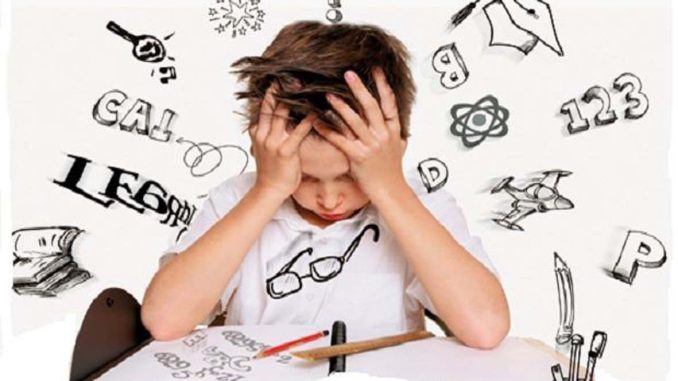
## Cultivating Success: Empowering Students with Learning Disabilities
The modern classroom is a vibrant tapestry of diverse learners, each bringing unique strengths, perspectives, and learning styles. Among this rich mosaic are students with learning disabilities, individuals whose brains process information differently, leading to challenges in specific academic areas such as reading, writing, or mathematics, despite average or above-average intelligence. Helping these students thrive is not merely an act of compassion; it is a pedagogical imperative that unlocks their immense potential, fosters their self-esteem, and ensures they have equitable opportunities to succeed. This requires a nuanced understanding, a tailored approach, and a commitment to creating inclusive and supportive learning environments.
The first and most critical step in supporting students with learning disabilities is early identification and accurate assessment. Often, a student’s struggles are misattributed to lack of effort or intelligence, leading to frustration and disengagement. Recognizing the subtle signs—such as persistent difficulties with phonics, struggles with organizing thoughts for writing, or challenges with numerical reasoning—is paramount. Once potential indicators are observed, a comprehensive evaluation by educational psychologists or specialists can provide a formal diagnosis, which is the gateway to understanding a student’s specific learning profile. This diagnosis clarifies *what* the student struggles with and, crucially, *how* their brain learns, paving the way for targeted interventions rather than generic solutions.
With a clear understanding of the learning disability, the next step involves implementing individualized instructional strategies. There is no one-size-fits-all approach, as learning disabilities manifest differently in each student. For a student with dyslexia, for example, a multi-sensory approach to reading instruction, incorporating visual, auditory, and kinesthetic elements, can be highly effective. This might involve tracing letters while simultaneously saying their sounds. For a student with dysgraphia, which affects writing, accommodations might include providing note-takers, allowing voice-to-text software, or offering graphic organizers to structure thoughts before writing. The key is to leverage their strengths while directly addressing their areas of challenge, recognizing that alternative pathways to learning are not shortcuts but essential accommodations.
Beyond specific instructional techniques, creating a supportive and inclusive classroom environment is fundamental. Students with learning disabilities often face a disproportionate burden of self-doubt and anxiety due to past struggles. A great teacher fosters a culture where mistakes are viewed as learning opportunities, effort is celebrated, and diversity in thinking is embraced. This means providing ample positive reinforcement, focusing on progress rather than just perfection, and ensuring that students feel safe to take risks without fear of judgment. Modifying the physical environment, such as minimizing distractions for students with ADHD or providing preferential seating, can also make a significant difference. Importantly, promoting understanding and empathy among all students about learning differences can create a peer support network, reducing stigma and fostering a truly inclusive community.
Collaboration among educators, parents, and specialists is another cornerstone of effective support. A student’s educational journey is a shared responsibility. Regular communication between teachers and parents is vital to ensure consistency between school and home strategies. Parents can offer invaluable insights into their child’s learning patterns outside of the classroom, while teachers can provide updates on progress and challenges. Furthermore, consulting with special education teachers, therapists (such as occupational or speech therapists), and psychologists ensures a holistic and comprehensive approach. In many educational systems, this collaboration is formalized through individualized education plans (IEPs), which outline specific goals, accommodations, and services tailored to the student’s needs, creating a roadmap for success.
Technology plays an increasingly powerful role in empowering students with learning disabilities. Assistive technologies are no longer niche tools but readily available resources that can level the playing field. Text-to-speech software can help students with reading difficulties access digital content, while speech-to-text programs can assist those with writing challenges. Organizational apps, digital planners, and mind-mapping tools can aid students with executive function difficulties in managing tasks and staying organized. Interactive learning platforms can provide personalized practice and immediate feedback, allowing students to learn at their own pace and revisit concepts as needed. The strategic integration of these tools can significantly enhance a student’s independence and academic accessibility.
Finally, fostering self-advocacy is perhaps one of the most empowering gifts an educator can give to a student with a learning disability. As students mature, understanding their own learning profile—what helps them learn best, what challenges them, and what accommodations they need—becomes crucial. Teaching them how to articulate these needs to teachers, future employers, or university professors equips them with a lifelong skill. This might involve role-playing scenarios, encouraging them to participate in their IEP meetings, or simply creating opportunities for them to reflect on and express their learning preferences. When students become active participants in their own educational journey, they develop confidence, resilience, and the agency to navigate academic and professional environments effectively.
In conclusion, helping students with learning disabilities succeed requires a multi-faceted, compassionate, and evidence-based approach. It begins with accurate identification, moves through individualized instructional strategies and inclusive classroom environments, thrives on collaborative partnerships, leverages appropriate technology, and culminates in the cultivation of strong self-advocacy skills. By recognizing their unique ways of learning and providing targeted support, educators can unlock the incredible potential within these students, transforming perceived challenges into pathways for truly remarkable achievements, and ensuring that every student has the opportunity to shine.